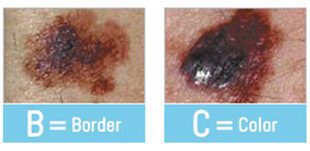By Ruben Guzman, M.D., FACOG


Pelvic Floor Prolapse and Incontinence
During a woman’s lifetime, there are natural events that can cause weakness of the pelvic floor support and risk development of pelvic organ prolapse (POP) such as vaginal deliveries and aging. In addition, there are surgical and medical disorders that can promote POP like hysterectomy, pelvic tumors, chronic constipation and COPD to name a few.
POP is a form of prolapse or hernia of the pelvic organs that may cause symptoms of vaginal pain or pressure, urinary frequency, urinary or fecal incontinence, vaginal bulge and even discomfort with sexual intercourse. Any of these symptoms can affect, to varying degrees, a woman’s quality of life.
With a vaginal delivery, the bigger the baby, the more damage can be caused to the pelvic support. Also, an extended second stage of labor, which is when a patient is pushing, can cause damage to the supportive tissue. However, the pelvic organ prolapse which consists of uterine prolapse, cystocele, rectocele, enterocele or vaginal prolapse, most commonly manifest themselves later in life during a woman’s 50s, 60s, 70s or 80s.
Diagnostics
In the process of identifying POP or incontinence issues, a physical examination is essential to help identify pelvic floor weakness and prolapse of the specific organ. During the exam, the patient may be asked to cough or perform a Valsalva maneuver, which can help to further identify the pelvic organ prolapse and its severity. Laboratory tests, like a Urinalysis, are routinely done to rule out bladder infection which can have symptoms also found in POP. More advanced testing, like Urodynamic testing, which evaluates bladder function, may be needed and can be done in the office.
Correcting the problem
Conservative treatment, such as Behavorial Modification, which may involve a change in diet or fluid consumption and Kegel exercises, may help diminish or relieve symptoms of POP. Women can do Kegel exercises or contractions of the pelvic floor muscles in the privacy of their homes. If women have difficulty identifying the pelvic floor muscle they can undergo a trial of Biofeedback or Pelvic Floor Rehabilitation which can also be done in the office and is simply a form of physical therapy for the pelvic muscles.
Pelvic floor rehabilitation sessions are approximately 20 to 30 minutes long. It may help to strengthen the pelvic muscle and add support to the uterus, vagina, bladder, and rectum, lessening or relieving the symptoms of POP.
Pessary devices are also a conservative option for women. These are prosthetic devices fitted for the vagina to artificially add support to the vagina and reposition the pelvic organs back in their place. There are several pessary types, the ring, dish or doughnut-shaped are types of pessaries. They are fitted and inserted by the medical professional, but can be easily removed if the patient no longer wants to rely on them or decides they are not working.
Surgical procedures are available for patients who do not respond to conservative measures. Most surgeries are aimed to restore support and anatomical positions of organs affected. They can be done transvaginally where there are no external incisions or scars. Transvaginal procedures also allow for a quicker recovery with less pain.
Nowadays, these procedures are normally done using the patient’s own tissue as opposed to asynthetic mesh. For incontinence, we still use suburethral slings with a mesh, which have been around for many years and are safe and effective.
Other surgical approaches to Pelvic Floor Disorders are via Laparoscopy or Open Abdomen. The Laparoscopic approach can now be performed with assistance of robotic surgery. The Robotic sacrocolpopexy, a more advanced procedure to restore vaginal position and support to bladder and rectum can be done during a hysterectomy or after years of a hysterectomy being done. After a hysterectomy, patients may develop vaginal vault prolapse. This is when the top part of the vagina folds down into the lower part or can prolapse outside of the vaginal opening. In most cases, the vagina can be repositioned and supported via a ligament from the sacrum (tailbone).
In short, robotic surgery is a minimally invasive method that typically utilizes a few small ports, as opposed to a full incision. The 3D video technology is magnified to the highest definition. The surgeon controls the robotic arms through finger instruments that utilizes the natural wrist movements helping surgeons be more precise and efficient in their surgery. The physician can visualize the field at a greater magnification and has unprecedented control from the console monitor to move the tools with ease. It is by far one of the most significant advancements to affect the medical world over the past century.
The Benefits of Robotic Surgery
• Quicker recovery times
• Improved visual magnification for the surgeon
• Precision
• Minor scarring
• Minimal discomfort
• Proven results
• Advanced outcomes
What Women Should Know
Pelvic organ prolapse and urinary incontinence are often brushed aside as a normal part of aging, but it is actually abnormal. Although countless women suffer from these disorders, they often are too embarrassed to mention to their medical provider. Patients do not have to live with the embarrassment, pain, incontinence, and anxiety any longer. Patients have choices, and they should understand that there are available options to restore their pelvic organ prolapse and optimize their quality of life. Ultimately, the patient decides what is best for them and what they think they would feel most comfortable trying.
Dr. Ruben Guzman, M.D., FACOG – OB-GYN, Urogynecology
Dr. Ruben Guzman is a board-certified obstetrician and gynecologist with subspecialty training in Urogynecology who offers a wide range of services, including well-woman gynecological care, woman with Gynecologic disorders as well as woman with Pelvic Floor Disorders. He is committed to providing high quality care to women through every stage in life. Before completing medical school, Dr. Guzman obtained a Bachelor of Science degree in biology from Wagner College in Staten, NY, where he graduated with honors. He received his medical degree from the State University of New York in Buffalo, NY, and completed his residency in obstetrics and gynecology at the Maimonides Medical Center in Brooklyn, NY. He then did a year of subspecialty training at St Lukes-Roosevelt Hospital in Manhattan working with Urology in developing his expertise in treating Pelvic Floor Disorders.
ShorePoint Health Obstetrics and Gynecology
3067 Tamiami Trail | Unit 1
Port Charlotte, FL 33952
(941) 766-0400
 Southwest Florida's Health and Wellness Magazine Health and Wellness Articles
Southwest Florida's Health and Wellness Magazine Health and Wellness Articles

